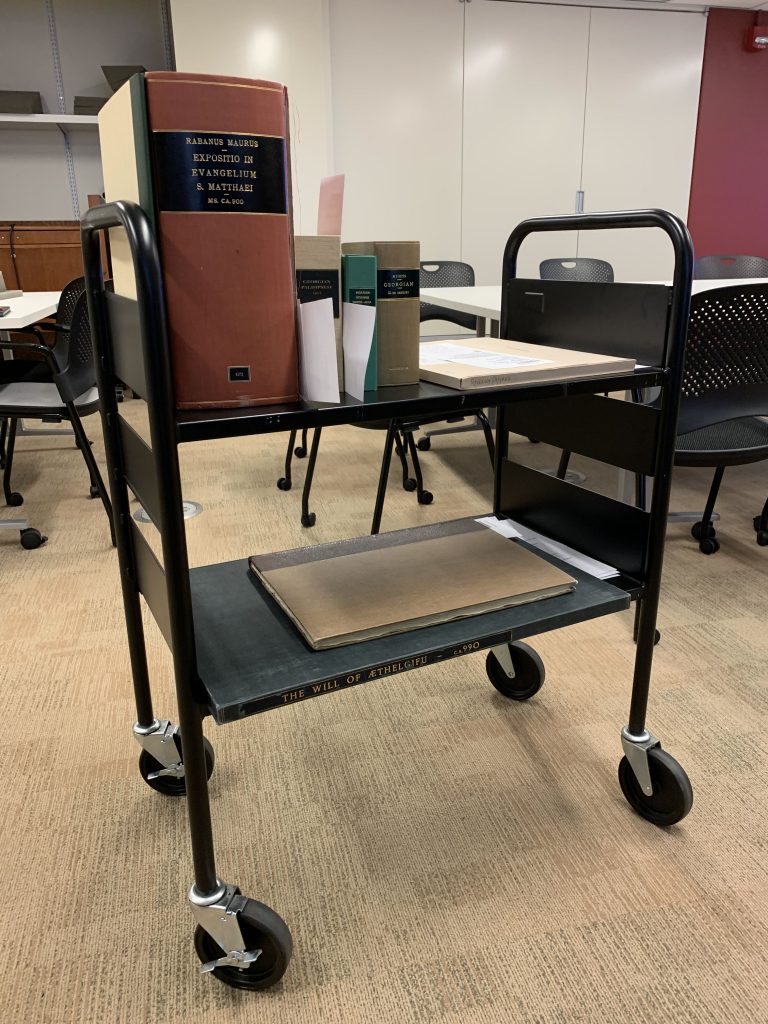The word marginalization, despite its many uses, originally referred to putting something on the margins of a page. In the Middle Ages, marginalia served as a means to highlight, illustrate, or explain something toward the center of a page, just as footnotes, headers, and footers do for us today. Marginalia might also include doodles, pen tests, or simple notes written on a convenient spot.
This site, however, investigates ways in which medieval manuscripts illuminate marginalization in the modern sense of the word. In some cases, manuscripts allow us to see how marginalization worked in the Middle Ages, as medieval producers of texts wrote people out of their histories. In other cases, we see how collectors preserved manuscripts in ways that marginalize people who had once held more central roles in their societies. The following manuscripts are examined:
- Garrett MS. 24. Inventio crucis (in Georgian). Byzantine Empire, 986.
Written over recycled Greek and Aramaic texts spanning the 500s-900s. - Scheide M98. Gift to the Abbess Johannia. Italy, ca. 700.
Papyrus in Latin that has attracted scholarly attention. - Garrett MS. 72. Rabanus Maurus, On Matthew. Germany, 840s.
Written in many hands, repaired and rebound across the centuries. - Garrett MS. 108. Vergil, Aeneid (German glosses). Germany, 900s.
Two leaves from a destroyed book, surviving as recycled binding. - Scheide M140. Will of Æthelgifu (Old English). England, 900s.
Last will of a woman, involving disposition of property, livestock, and slaves. - Scheide M141. Funeral Office. Egypt or Palestine, ca. 1100.
Funeral rites in Greek and Arabic from around the time of the First Crusade.
Matthew Delvaux is a postdoctoral fellow in the Society of Fellows and a Lecturer in the Humanities and History. He guided examination of these manuscripts for a course he developed, HIS 462: Difference and Deviance in the Early Middle Ages, taught in Spring 2022 at Princeton University. The main contributors are Sophie Lockwood, Juan José López Haddad, Charlotte Root, Madison Stewart, and Juliana Wojtenko. All manuscripts are held by the Manuscripts Division of the Princeton University Library. Special thanks go to Eric White and Gabriel Swift of the Princeton University Library Special Collections, Ben Johnston of the McGraw Center for Teaching and Learning, and the Princeton Department of History, the Humanities Council, and the Program in Medieval Studies, for their support.
Preferred Citation
Sophie Lockwood, Juan José López Haddad, Charlotte Root, Madison Stewart, and Juliana Wojtenko, Marginalization in Medieval Manuscripts (2022). Online: https://commons.princeton.edu/marginalization/
